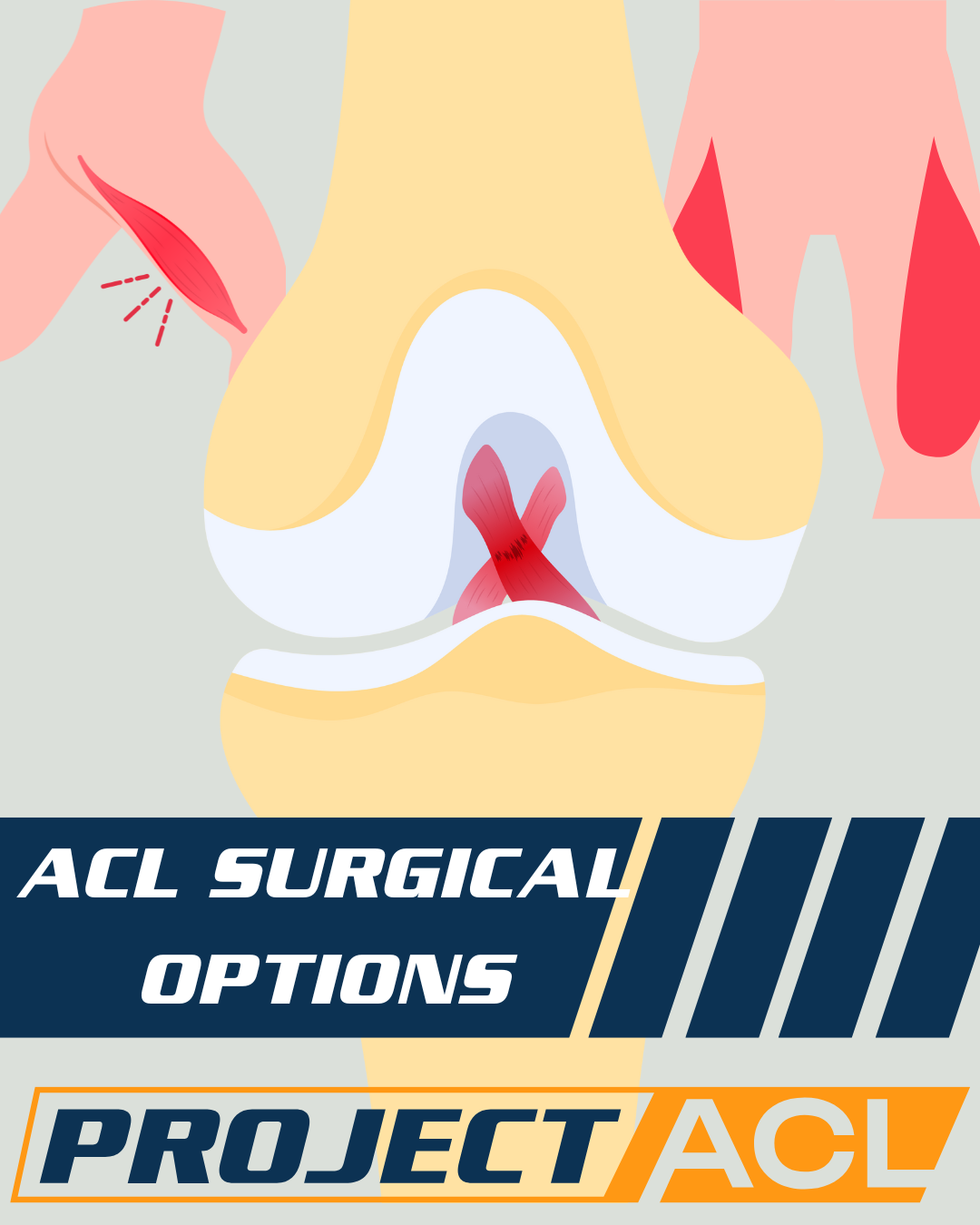Understanding ACL Surgery: The Most Common Types of ACL Reconstruction Procedures
If you’ve torn your ACL, there’s a good chance your surgeon will recommend reconstruction — a procedure where the torn ligament is replaced with a graft. But not all ACL surgeries are the same, and the type of graft used can have a major impact on your recovery experience, rehab plan, and return to sport.
Here’s a breakdown of the most common ACL reconstruction options used today, including the pros and cons of each.
1. Patellar Tendon Autograft (BTB – Bone–Tendon–Bone)
This technique uses the middle third of your own patellar tendon, along with small pieces of bone from the kneecap and tibia (shinbone), to replace the ACL.
Pros:
Strong, bone-to-bone healing — typically faster to integrate
Long-term durability in high-demand athletes
Frequently used in high-level and contact sports
Cons:
Can cause anterior knee pain, especially when kneeling
Slightly higher risk of patellar tendonitis or stiffness
Best suited for:
Younger athletes or those in high-impact, pivoting sports (e.g., soccer, football, basketball)
2. Hamstring Tendon Autograft
This method uses your own hamstring tendons (usually the semitendinosus and sometimes gracilis) to reconstruct the ACL.
Pros:
Smaller incision and less post-op knee pain
Lower risk of kneecap-related issues
Commonly used worldwide, especially in non-contact athletes
Cons:
Healing of tendon to bone takes longer than bone-to-bone grafts
Potential for hamstring weakness or cramping during rehab
Slightly higher graft failure rate in younger athletes (<20 years)
Best suited for:
Non-contact or endurance athletes, or individuals with specific kneecap pain concerns
3. Quadriceps Tendon Autograft
A newer and increasingly popular option, this uses the quadriceps tendon (usually with a small bone plug from the kneecap) as the graft.
Pros:
Very strong and thick graft material
Less anterior knee pain than patellar tendon grafts
Suitable for larger or high-power athletes
Cons:
Slightly more technically demanding for the surgeon
Potential for temporary quadriceps weakness early in rehab
Best suited for:
Athletes who’ve had previous ACL reconstructions, or those looking for a balance between strength and reduced kneecap symptoms
4. Allograft (Donor Tissue)
This technique uses tissue from a donor (cadaver), often a patellar, hamstring, or Achilles tendon.
Pros:
No graft taken from your own body — shorter surgery and quicker early recovery
Less initial pain and swelling
Cons:
Higher failure rate, especially in young or active athletes
Longer time needed before the graft becomes fully integrated
Small risk of disease transmission (though rare)
Best suited for:
Older, less active individuals, or those undergoing revision surgery or multi-ligament reconstruction
Which Graft Is Best?
There’s no one-size-fits-all answer. The “best” graft depends on:
Your sport
Your age
Your activity level
Your history of injury
Your surgeon’s recommendation and expertise
It’s important to talk with your surgeon and rehab team to understand the pros and cons of each option — and to build a rehab program that aligns with your specific surgical procedure.
Rehab Should Match the Surgery
Each graft comes with its own recovery profile. For example:
Patellar tendon grafts often require more anterior knee care and mobility work
Hamstring grafts may need prolonged hamstring protection and gradual loading
Quadriceps tendon grafts require careful quad recruitment strategies early on
At Project ACL, we build rehab plans that are surgery-specific, ensuring your recovery respects the biology of your graft while still progressing toward high-level performance.
Want to learn more about ACL recovery after surgery?
Contact us to book an initial consultation — and let our team help guide your return to sport the right way.

